1. SAMR Model
1.1. Created by Dr. Ruben R. Puentedura
1.2. The SAMR model is a framework to describe how technology affects teaching and learning.
1.3. There are four levels of the SAMR model which are devised into two
1.4. "Any teacher can take any piece of technology and use it. But what they do with it is either enhancement or transformational." (U of A, EDU 210 Interactive Story)
1.4.1. Transformational: Modification & Redefinition // ideal and student grades increase.
1.4.1.1. Redefinition: Technology allows for creation of new tasks, previously inconceivable. // one full increased grade difference
1.4.1.1.1. ex: Algodoo Physics simulation or creating a video documentary.
1.4.1.2. Modification: Technology allows for significant task redesign. // half of a increased grade difference
1.4.1.2.1. ex: Sketchup 3D Drawing tool or having an authentic audience for an audio report.
1.4.2. Enhancement: Substitution & Augmentation // student grades do not change.
1.4.2.1. Augmentation: technology acts as a direct substitution, with functional improvement
1.4.2.1.1. ex: Google earth vitrual journey or taking an online assessment instead of paper.
1.4.2.2. Substitution: technology acts as a direct substitution, with no functional change.
1.4.2.2.1. ex: BBC History site or powerpoint presentations instead of content written on the board.
1.4.3. SAMR image: http://blogs.adobe.com/educationleaders/files/2012/10/SAMR-model.jpg
1.4.4. SAMR padwheel map: http://www.unity.net.au/padwheel/padwheelposter.pdf
1.5. SAMR Model integrates the ideas of TPACK.
1.6. Youtube video: http://www.youtube.com/watch?v=us0w823KY0g
2. 21st Century Learning
2.1. Created by Punya Mishra & Kristen Kereliuk, 2013
2.2. 3 ideas merged together: foundational knowledge, meta knowledge and humanistic knowledge.
2.2.1. Foundational Knowledge: content, info literacy, cross-disciplinary knowledge // what the students bring to knowledge. They may have access to it but not good at it.
2.2.2. Meta Knowledge: problem solving & critical thinking, communication & collaboration, creativity.
2.2.3. Humanistic Knowledge: life & jobs skills, cultural competence, ethical & emotional awareness.
3. TPACK
3.1. TPACK stands for Technological Pedagogical Content Knowledge. It is a framework that recognizes the knowledge teachers need for effective teaching with technology. (www.tpack.org) // Purposeful use of technology in the classroom.
3.2. The TPACK framework is the interaction, teamwork and entwining of three manifests of knowledge: Content (CK), Pedagogical (PK) and Technological (TK). It's displayed in a Venn diagram.
3.2.1. Content Knowledge: areas of expertise, curriculum, subject matter, central facts, concepts, theories and procedures within a given field.
3.2.1.1. Pedagogical & Content Knowledge (CPK): “Consistent with and similar to Shulman’s idea of knowledge of pedagogy that is applicable to the teaching of specific content. Central to Shulman’s conceptualization of PCK is the notion of the transformation of the subject matter for teaching. Specifically, according to Shulman (1986), this transformation occurs as the teacher interprets the subject matter, finds multiple ways to represent it, and adapts and tailors the instructional materials to alternative conceptions and students’ prior knowledge. PCK covers the core business of teaching, learning, curriculum, assessment and reporting, such as the conditions that promote learning and the links among curriculum, assessment, and pedagogy” (Koehler & Mishra, 2009).
3.2.2. Pedagogical Knowledge: how to teach, classroom management, student thinking and learning, lesson planning, and assessment.
3.2.2.1. Technological Pedagogical Knowledge (TPK): “An understanding of how teaching and learning can change when particular technologies are used in particular ways. This includes knowing the pedagogical affordances and constraints of a range of technological tools as they relate to disciplinarily and developmentally appropriate pedagogical designs and strategies” (Koehler & Mishra, 2009).
3.2.3. Technological Knowledge: the ability and knowledge to use, install and update software, computers, devices, hardware and skills associated with technology.
3.2.3.1. Technological Content Knowledge (TCK): “An understanding of the manner in which technology and content influence and constrain one another. Teachers need to master more than the subject matter they teach; they must also have a deep understanding of the manner in which the subject matter (or the kinds of representations that can be constructed) can be changed by the application of particular technologies. Teachers need to understand which specific technologies are best suited for addressing subject-matter learning in their domains and how the content dictates or perhaps even changes the technology—or vice versa” (Koehler & Mishra, 2009).
